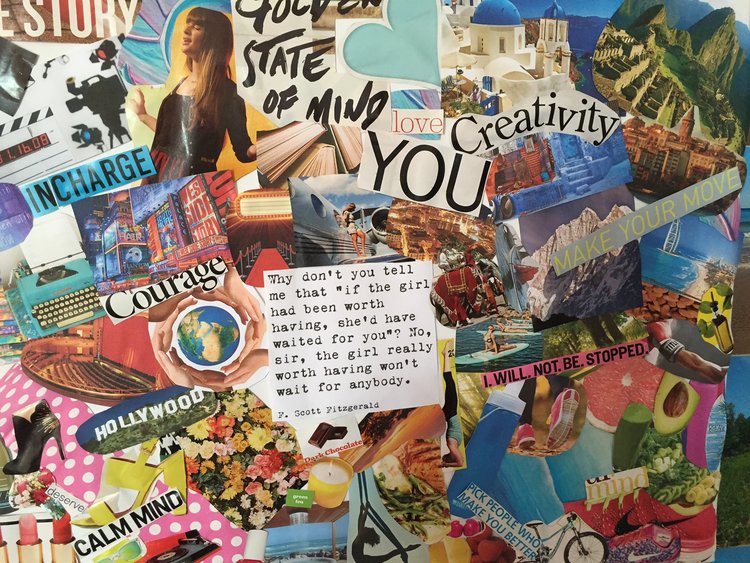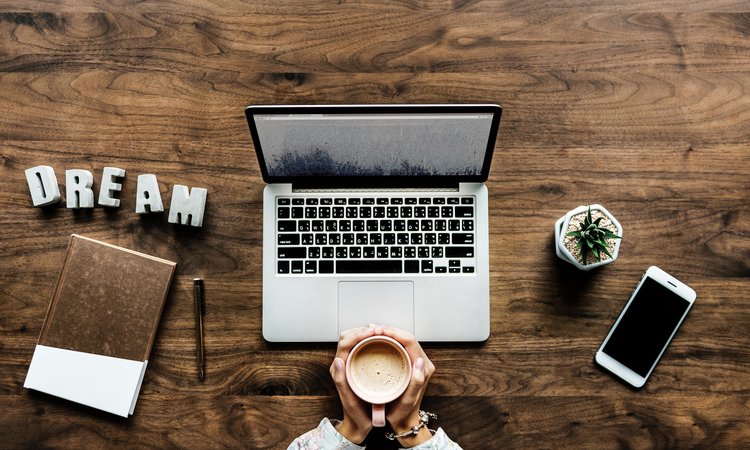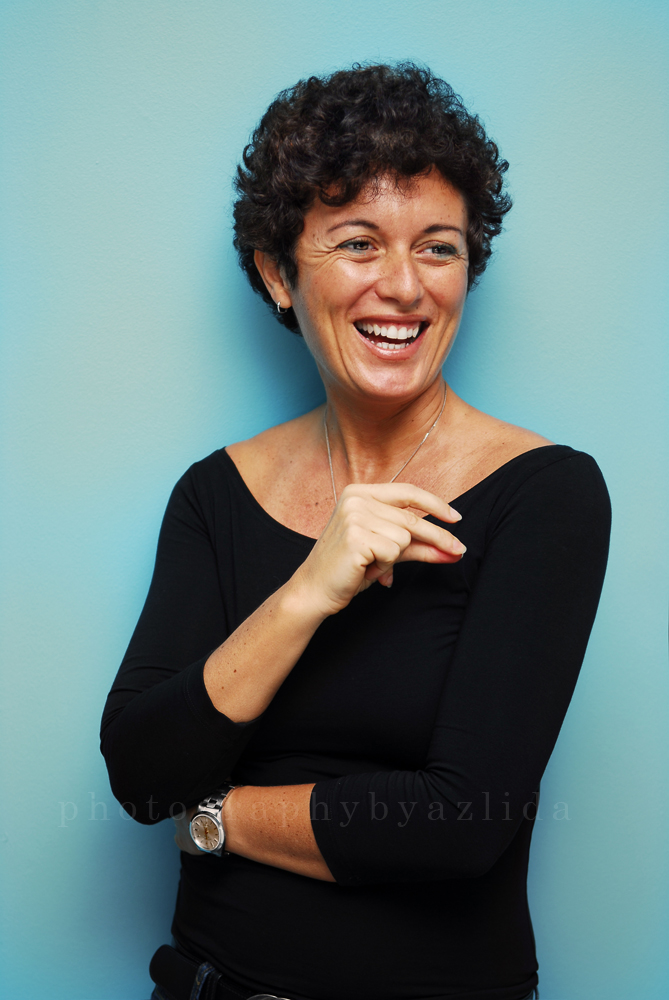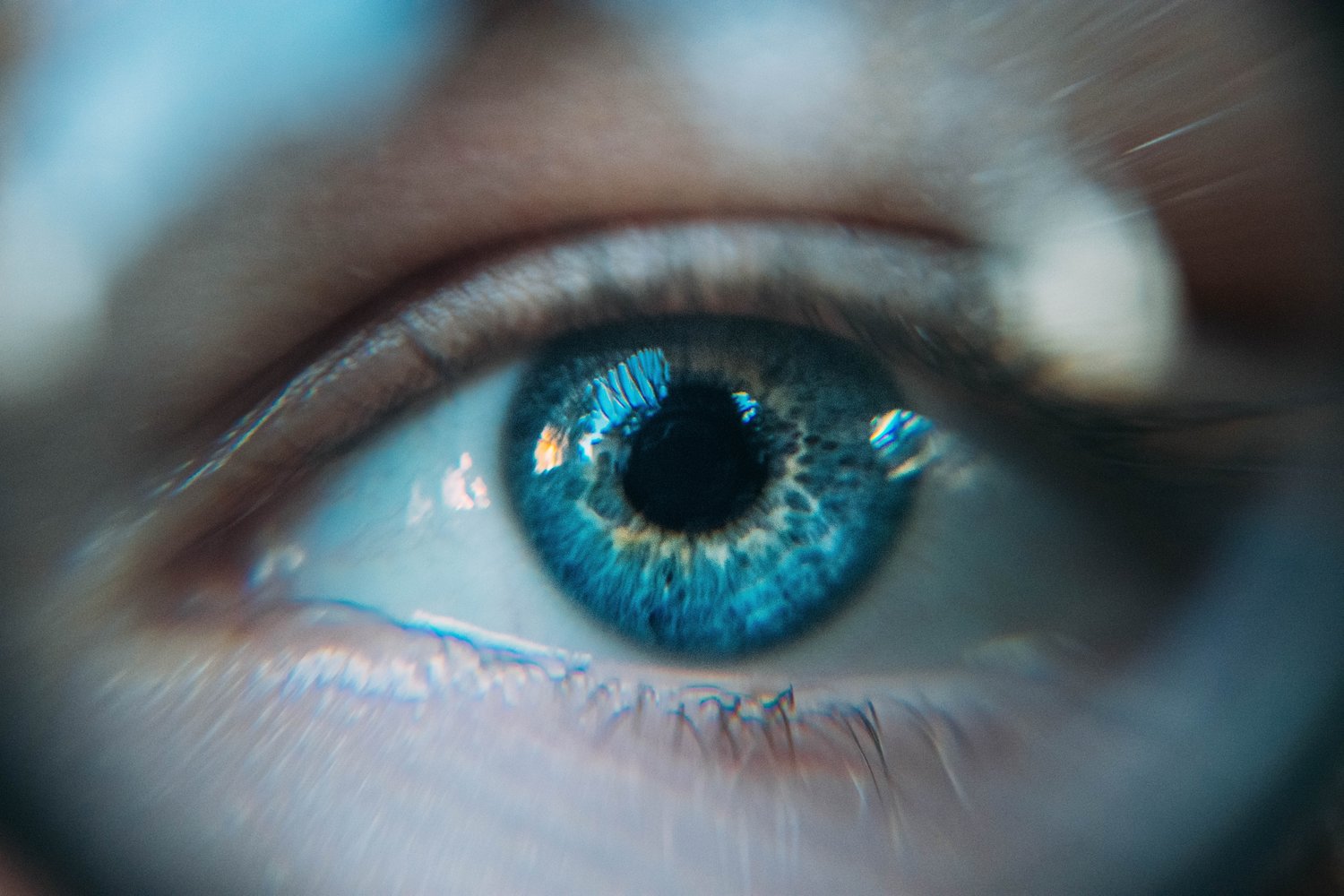We often hear about and come across the term vision boards and visualising. We might know the benefits of using tools as such and we might not. But often we aren’t aware of the correlation between vision boarding and confidence. Even more so than a vision board, an inventory. Taking inventory of the past year is a useful tool. How do these tools come to play with confidence? Well, they help you to practice observing your actions and perhaps inactions and in so doing, practice becoming more confident in yourself.
A truly confident person chooses to no longer live in denial and to review the past but not swim in it. Taking inventory is much the same, reviewing the past in order to create the fruits to move forward. We are after all the result of our past actions or non-actions and when it comes to a vision, these actions and non-actions are relevant. A confident person knows themselves and their goals and is not afraid to recognise their blind spots, which can pop out uncomfortably whilst taking an inventory. Thus, the practice itself helps us to become more confident so long as we do not enter self-judgement and let it belittle us.
THE IMPORTANCE OF TAKING AN END-OF-YEAR INVENTORY
I’ve come to learn that having a personal vision is crucial and relevant when we want to live a self-aware life. Reflecting upon the past year and building that personal vision for the new year is hugely beneficial when we want to become self-aware and stop living life in autopilot.
The beginning of a new year is the perfect time to put together a vision board and set goals in the different areas of our life and wellbeing. Doing so helps keep our desires and goals at the forefront of my minds, visually engaging us every day. People often wonder why a mental vision does not suffice… Put simply, creating a physical and tangible montage of your goals in the form of a vision board makes it much easier to retain those dreams in our heart and minds even when we’re busy or facing challenges. Having a visual reminder of what we’re working towards and want, keeps the vision in clear focus even when we get distracted by outside temptations to let go of our commitment to ourselves.
There’s no need to go into too much detail on the positive impacts of drawing and collating a vision board though, there are countless articles and blogs about that online you can find. Instead, I’d like to invest this time writing about what I believe to be necessary to do before we end the year or the beginning of a new year: design (or re-jig) a new vision for the new year.
It’s important to reflect on what the year that has just passed has given us and what we’ve been able to create in that time. It’s important to note what we may have not created too of course, not as an invitation for the inner-critic to devour us, but as a responsible and honest acknowledgment or positive reinforcement.
BUILDING A VISION BOARD INVENTORY
Analysing what has happened or not happened and why, is the very first step in designing a powerful personal vision. To do this, we need to look back.
I normally don’t end up accomplishing all of the goals I set and of course a part of me would love to skip this analytical stage. Many of my friends or colleagues recommend not to look back at all, but rather remind me to stay in the present. “The present is all that matters”, I often hear, and indeed I do agree. But how can we live in the present in a healthy and functional way without opening ourselves to learning from the past?
An inventory at the end of the year is exactly this: looking at the past without falling into the trap of simmering there and being enveloped by it. It’s easy to fall into that trap but doing so will only put us at risk of becoming the victims of our past. Instead, we must observe what we did and didn’t do in the past year, without judgement, and recognise what we can celebrate and most importantly, learn from.

LEARNING LESSONS FROM THE PAST
Living life with open eyes is like going to school every day. Many of us believe we finished with school when we left high school or uni but this is not the case. School never really ends. Each day as an adult, we’re learning something new and applying it to our lives, hopefully in a responsible way which can bring us joy and happiness.
At school we learn to celebrate our successes. We’re also taught to recognise our mistakes in order to learn from them and ameliorate our outcome next time.
In life it’s much the same only we don’t have teachers shedding light on our mistakes. As we grow into adults, we’re required to take life into our own hands. We are responsible for our choices. Our mind therefore, needs to be clear, flexible and open to not only evaluating what we did well and succeeded in, but also what we could have done better. We need to nurture a mind and an attitude that enables us to approach our ‘mistakes’ without fear or judgement but rather with acceptance and joy at the lessons we can receive from them.
This is crucial to remember because we can be far more critical and demanding of ourselves than we might think.
ENGAGE WITH AN EXPERIENCED LIFE COACH
We must remember that all this is a process, not a quick fix.
You need to set a time to sit down for your vision and inventory and the best time is at the end or the beginning of the year, alone in your own company. I know we’re a few weeks into January, but it is still early enough to take some time to yourself and work on this.
If you feel you’re able to be objective and honest about yourself, working by yourself will still reap tons of benefits. If however, you struggle with objectivity or come across some resistance, I’d recommend that you engage with an experienced coach who can help you in the process. They’re useful in helping you objectively distinguish the blind spots that our own ego hides us from seeing and admitting to.
When we can’t recognise something ourselves, it’s because we’re blind to it, often in denial. Often this is because of having low self-esteem, but how can we know that? A coach can guide us to see what we can’t, and most often don’t want, to see because it is too painful.
After working with many clients from various backgrounds and nationalities over the years, I’ve come to recognise 4 major reasons for which people prefer to remain blind and live in denial:
Because of an inability to take ownership for their actions (or lack thereof). This could trigger toxic guilt and shame, which we’ve not been trained to deal with and therefore can be harmful if not done with the support of a professional.
Because we’re still getting some kind of pay-off from staying in denial. For example, not having to take responsibility or ownership for our actions.
Because we might be in the middle on an inner conflict we’re not yet ready to face or resolve.
Because we’re not aware enough of our patterns and conditioning. This is when we are run by our subconscious.

4 STEPS TO BUILD A YEARLY VISION INVENTORY
- Make a List. Write it down on 2 separate columns: everything you’ve achieved and everything you might not have.
- Feel What’s Happening In Your Body. When everything is on paper, it’s important to remain out of judgement (the mind can be our greatest enemy if we let it) and become aware of our emotions. Jot down what sensations you might be feeling in your body and where they’re coming from. Calmly and at your own pace, journal about the physical sensations you might be perceiving, connecting them to your emotional state in the present.
- Discover the Root Thoughts. Do your best to try and identify the thoughts and beliefs at the root of the physical sensation or emotion you’re experiencing.
- Practice Fully Experiencing and Feeling Your Emotions and Thoughts. Without judging or escaping through distractions such as food, smoking, drinking etc, work on accepting the process of the emotions, physical sensations and thoughts which have emerged… even the not so positive ones.
A PERSONAL EXPERIENCE
A few days ago, upon observing the chaos around me (whilst making my inventory for 2018), I had a panic attack. I didn’t try and escape it through food or chatting with friends as I would have done in the past. Instead, I searched for an ear to listen to me for a few moments and I embraced and bore the pain in my chest and shortage of breath (the physical reaction). Then I began to take control of my breath and I allowed oxygen to slowly enter my system. Slowly but surely, I brought myself back to normal and was able to look at everything in a more loving and less dramatic and judgemental way. I could take ownership and make the necessary choices and changes to switch my state in a few hours. It was important for me to feel my feelings and search for the root thoughts, around which I then journaled. It was relevant to allow my tears to appear and flow. It was also a priority to give myself permission to feel everything that was going on as I went into memories to sense an old hurt which clearly still needed time and healing.
This is what I mean when I say ‘embracing and bearing’… I mean managing and working with the disappointment and other emotions we might face when we realise we may have not reached our goals.
LEARNING THE LESSON
We do not build a vision inventory only to end up criticising ourselves. The intent here is not to list all the reasons for which to hate on ourselves. We need to approach this task with compassion for ourselves for it to be truly healing and fruitful and to learn what we need to do going forward.
If we only look at what we’ve achieved and dismiss what we haven’t, how can we move into the new year with a clear, renovated intention and strength to achieve the goals we set on our vision board?
Denial, lack of ability to take ownership or being truly responsible, fear of losing face (toxic shame and guilt) are the root issues of our ‘failures’. There are times when we also experience inner conflict. It will continue to exist, unresolved until we can recognise it, and only then can we move on and set new goals for ourselves.
Let’s also not forget that more often than not, the reason we’re not achieving our goals is because of unconscious dynamics and behaviours at play. We are not aware of how we are being pushed into certain directions or letting ourselves be distracted by certain events or people. We don’t see how we might be self-sabotaging ourselves by doing exactly the opposite of what we’d set on our vision boards the year before. What’s important then is to bring what lies and exists in our consciousness into awareness so that it no longer has the power to work against us.
Self-Awareness is once again the key word. The vision inventory at the start of a new year is an amazing tool in helping us not only achieve those goals we set but also gain a greater understanding of ourselves and the world around us. When we become more self-aware, we can become more confident. We are not afraid to be uncomfortable and face the realities, we are driven by improving and learning about ourselves.
header image by Daniil Kuželev


